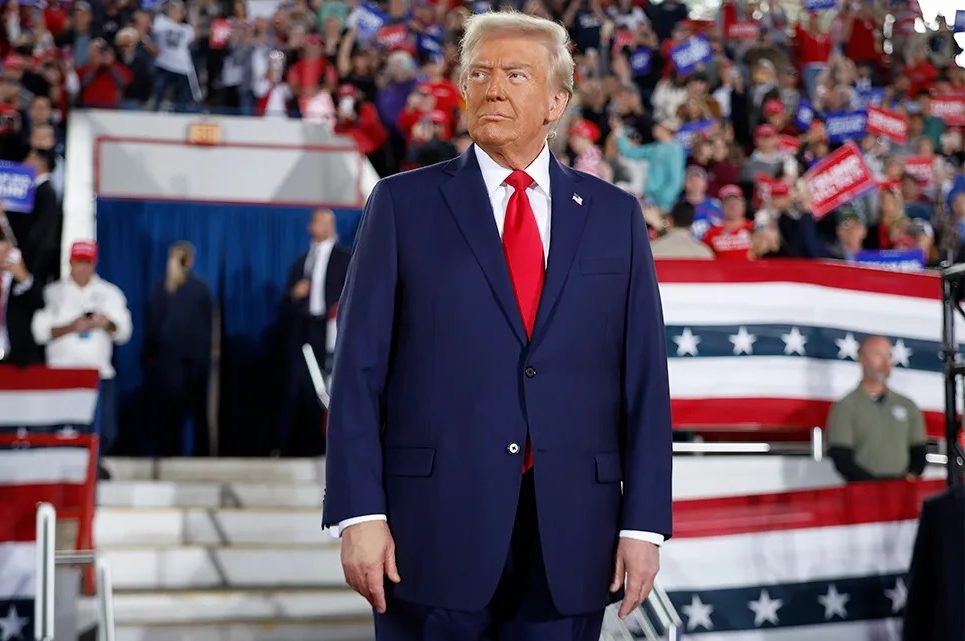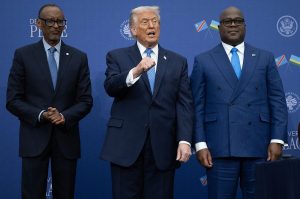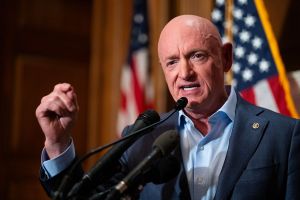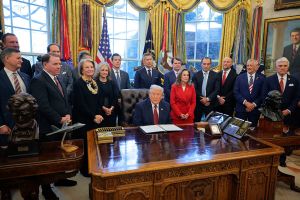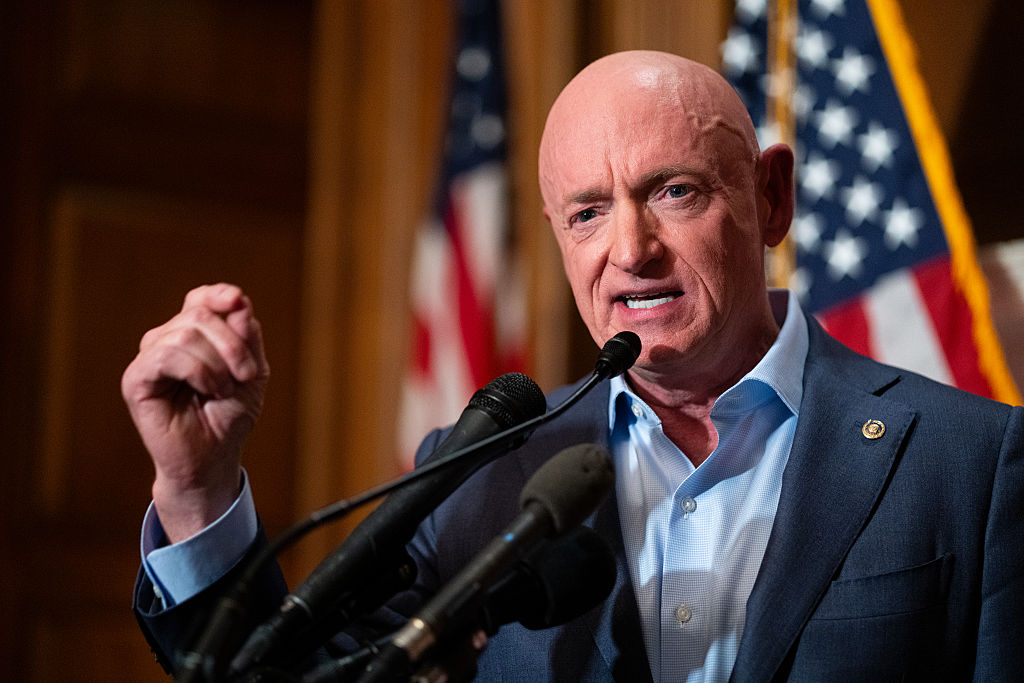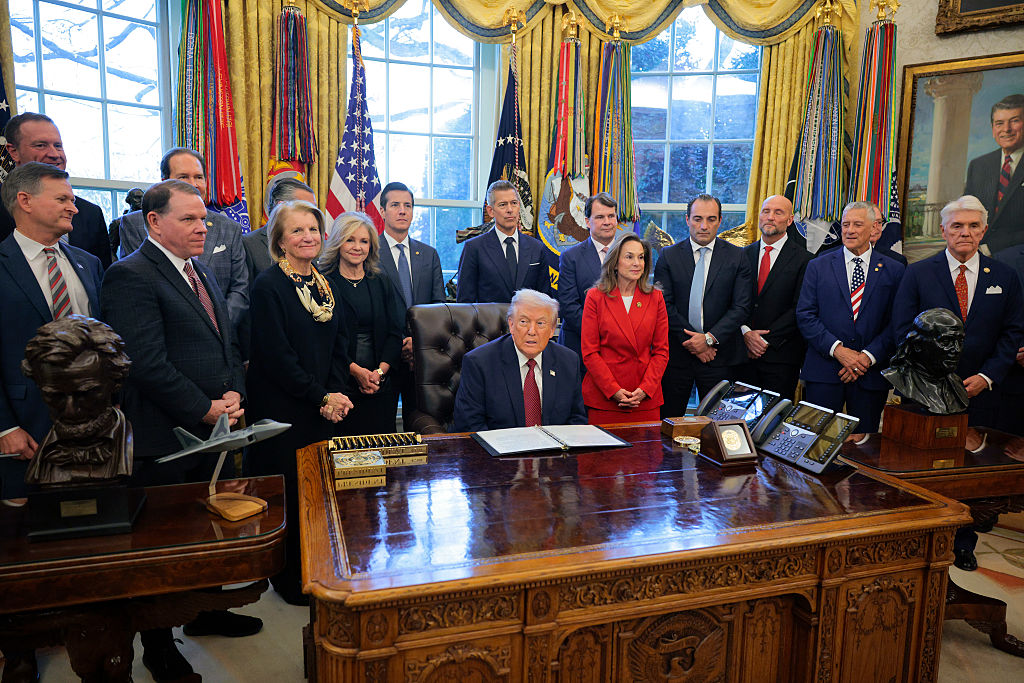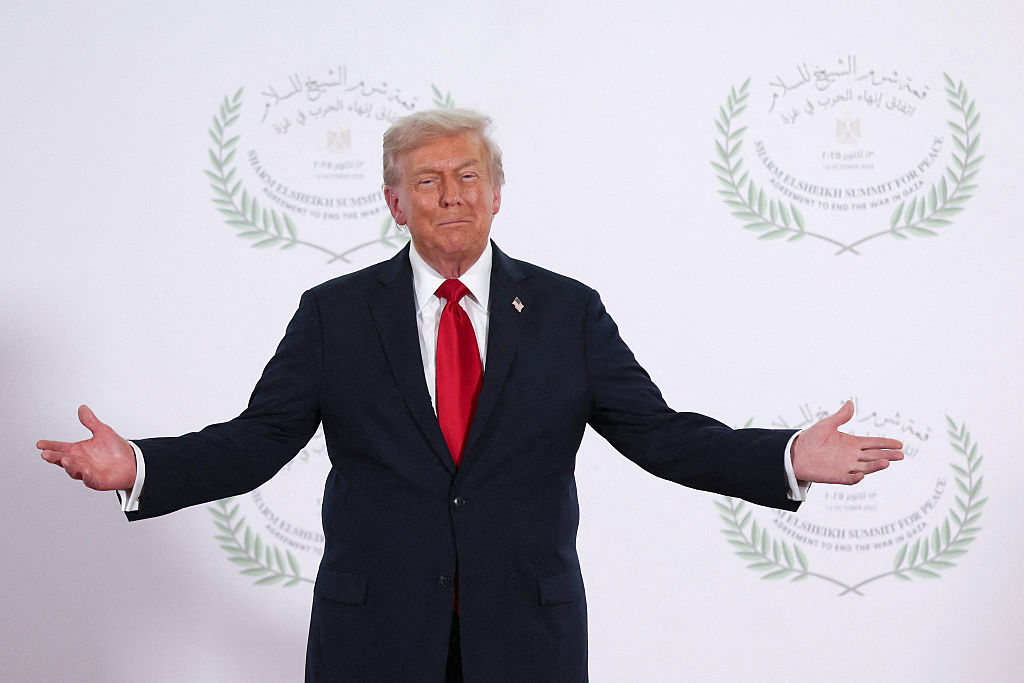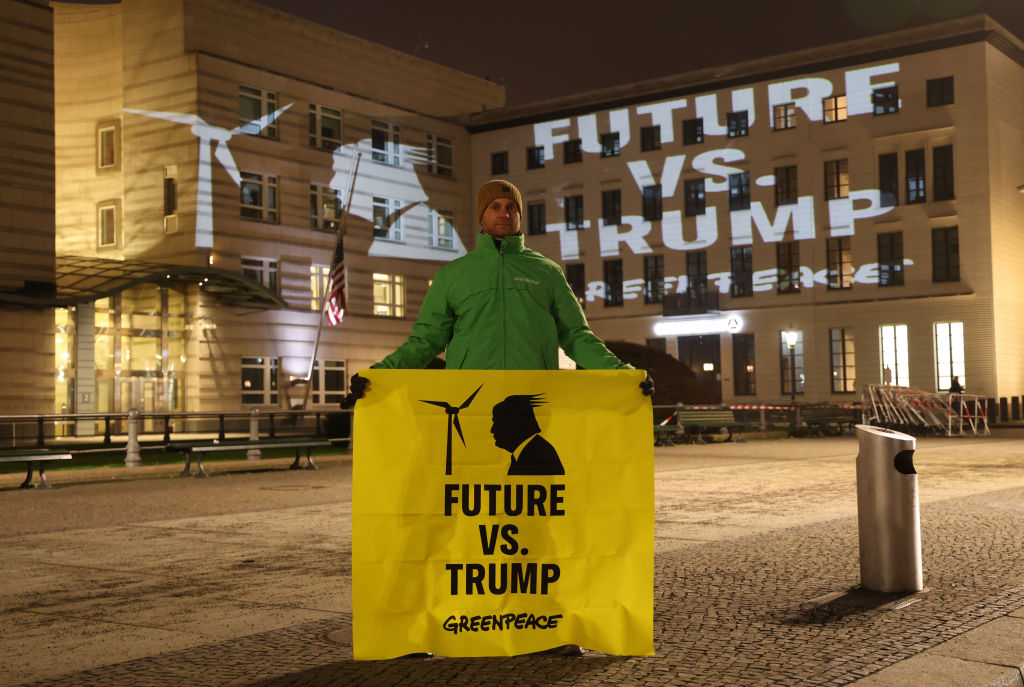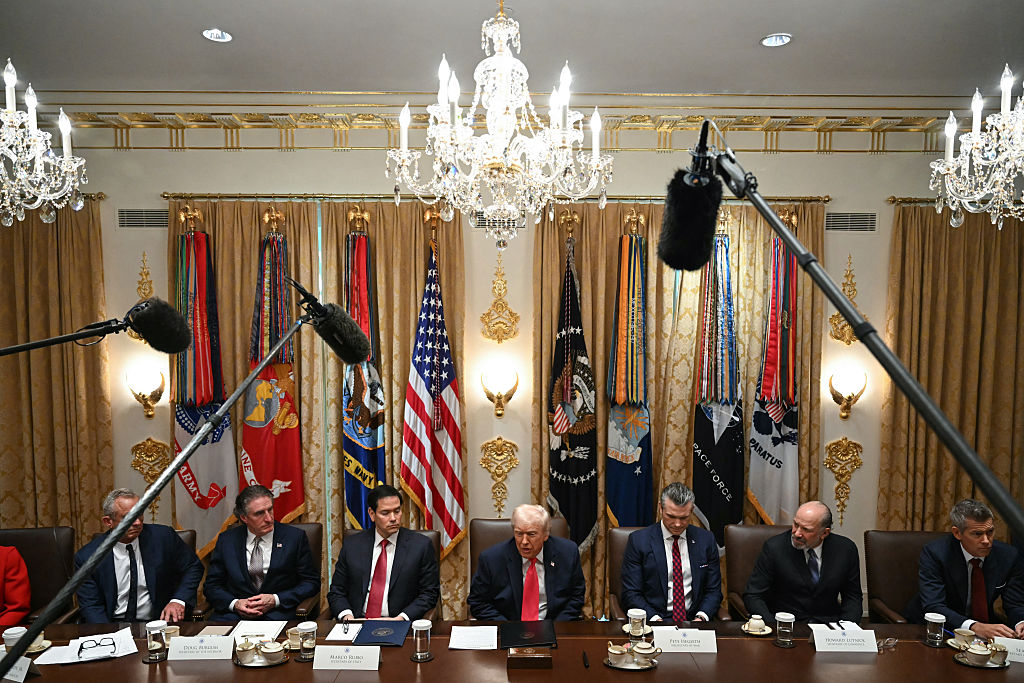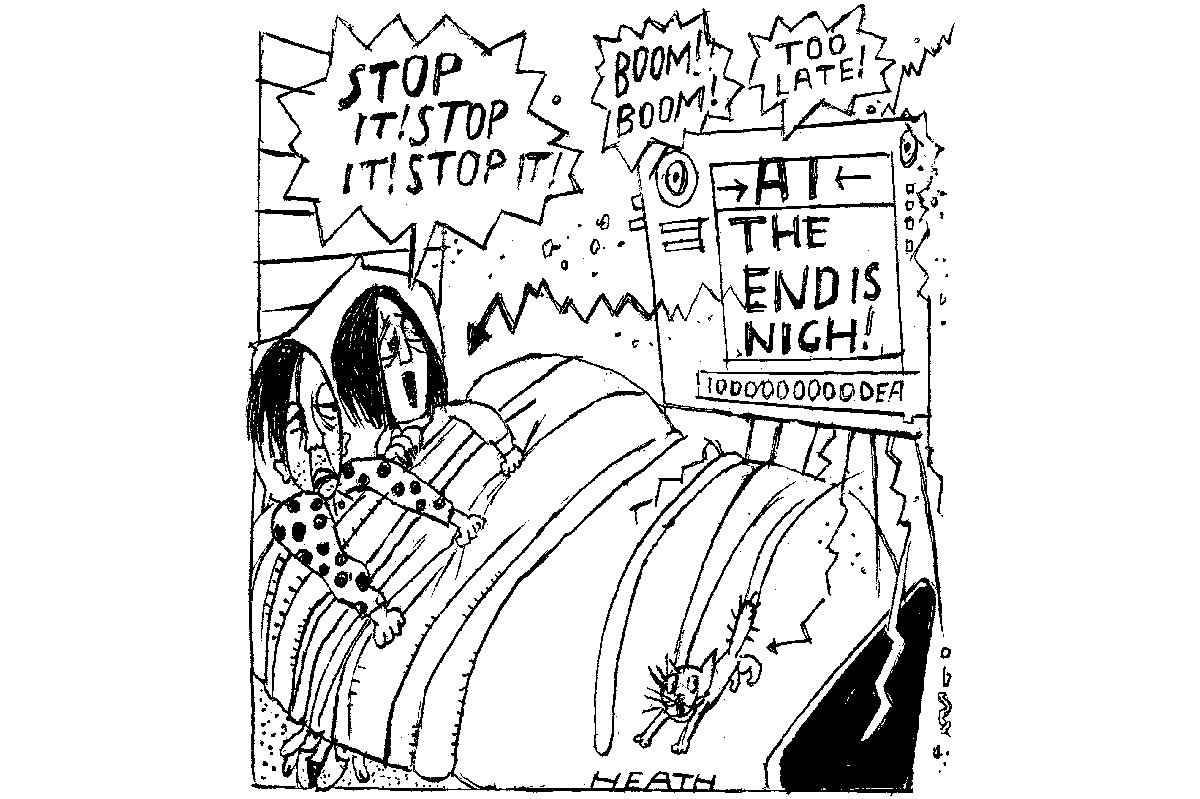It was supposed to be close. On the eve of election day, Donald Trump was up just 0.1 percent in the RealClearPolitics polling average. FiveThirtyEight projected a tiny Trump advantage. PredictIt had Kamala Harris ahead. A celebrated pollster ran 80,000 simulations, and Harris won 50.015 percent of them, versus 49.985 percent for Trump.
And it made some sense to expect a close result. With the exception of Barack Obama’s victories, every US election since 2000 has been close. In two cases, 2000 and 2016, the winner didn’t win the popular vote, which before then hadn’t happened since 1888, when Benjamin Harrison beat Grover Cleveland.
What makes American politics abnormal is that partisanship has become akin to sectarianism
But it wasn’t close at all — and so Trump has replicated Cleveland’s achievement in 1892, when he became the first president to secure a second non-consecutive term.
If American politics were normal, Trump’s victory would never have been in doubt. On nearly all the key issues, he was always well ahead. For likely voters, the economy was the clear number one concern. Although abortion, Harris’s signature issue, had overtaken immigration in some recent polling, it was far less important than inflation, the sin for which voters simply could not forgive Joe Biden’s administration — to which, after all, Harris belonged throughout. Now Harris has joined the list of sitting vice presidents who failed to win the presidency, along with the likes of Hubert Humphrey and Al Gore.
What makes American politics abnormal is that partisanship has become akin to sectarianism. Indeed, it is beginning to remind me of growing up in Glasgow, where the tribal rift — extending into every aspect of life — was between Catholics and Protestants.
A 2023 poll published in Newsweek showed that 21.5 percent of US citizens would only date someone with the same views, compared with 14.7 percent of a wider, global sample. A 2021 survey of college students, reported in the Washington Post, found that 71 percent of Democrats wouldn’t date someone with opposing opinions. Parties have become denominations, if not faith communities. “Six percent or fewer marriages are between a Democrat and a Republican,” according to the New York Times.
In this climate, Democrats find it very hard to acknowledge the simple realities of Trump’s appeal — an appeal going far beyond his white, middle-American, middle-brow base. Even I began to worry in the final days that Trump might fall short, for two reasons.
You might have expected the older, conservative candidate to lead with the over-65s. He didn’t. A late ABC News poll put Harris ahead among voters over sixty-five by five percentage points — a ten-point swing since 2020. The final New York Times/Siena College poll had Trump and Harris neck and neck with those older than sixty-five, who are between 27 percent and 33 percent of voters in swing states. According to Fox News, in Pennsylvania — the most important battleground state — Trump was five percentage points behind with oldies.
Trump took two risks in the final phase of the campaign. “At the suggestion of Elon Musk, who has given me his complete and total endorsement,” he told the Economic Club of New York on September 4, “I will create a government efficiency commission tasked with conducting a complete financial and performance audit of the entire federal government and making recommendations for drastic reforms.” By the end of October, Musk was talking about a new Department of Government Efficiency (DOGE for short, a crypto in-joke about his favorite meme coin) that would cut $2 trillion from the federal budget. I could think of nothing better calculated to terrify retirees in Pennsylvania. Two trillion is very close to the combined cost of Social Security and Medicare, programs on which many elderly Americans rely.
Just as disconcerting to them, I thought, was Trump’s decision to join forces with former presidential candidate Robert F. Kennedy, Jr. who opposed the Covid vaccines that saved a significant number of older voters’ lives in 2021. “I’m going to let him go wild on health. I’m going to let him go wild on the food. I’m going to let him go wild on medicines,” Trump said. “I said he could… do anything he wants. He wants to look at the vaccines. He wants everything. I think it’s great.” Fact: 93 percent of Americans sixty-five and over have been fully vaccinated against Covid, much the highest share of any age-group.
In this context, Trump’s Madison Square Garden rally on October 27 also looked to me like hubris. From Hulk Hogan ripping off his red T-shirt to the comedian Tony Hinchcliffe’s description of Puerto Rico as “a floating island of garbage in the middle of the ocean,” the whole thing seemed like an exercise in undecided-voter alienation.
Yet none of it mattered. It is interesting to see why. True, Biden helped offset the Puerto Rican damage by saying: “The only garbage I see floating out there is [Trump’s] supporters.” But the Trump campaign seized the moment. They had their man drive a garbage truck and then wear a garbage man’s red vest at a rally in Green Bay, Wisconsin. This was typical of the campaign’s nimbleness.
Compare and contrast with the Harris campaign’s technique of simply refusing to answer questions about their candidate’s policy positions. Over the past few months the news website Axios asked for Harris’s views on more than a dozen issues, ranging from the death penalty to the rights of illegal immigrants brought to the US as children. In every case the answer was “No comment.”
The Democratic machine looked formidable. More than two-fifths of voters were contacted by the Harris campaign in the last few weeks, according to Gallup, compared with just over a third by the Trump campaign. In two successful presidential runs, Obama’s campaign never did better than 33 percent. A total of 58 percent of Democrats heard from Team Harris; just 40 percent of Republicans heard from Team Trump.
But it turns out that the far better funded Harris campaign was wasting resources with a scattergun approach, contacting voters who are neither persuadable nor in key states. I certainly received many more text messages purporting to be from Harris herself than from any Trump campaign source. “Niall, it’s Kamala Harris,” began the last one. “I am turning to you because you are among my most dedicated supporters.” Whichever AI the Harris campaign used had a serious hallucination problem if it put me in that category.
Watch more on SpectatorTV:
This article was originally published in The Spectator’s UK magazine. Subscribe to the World edition here.



